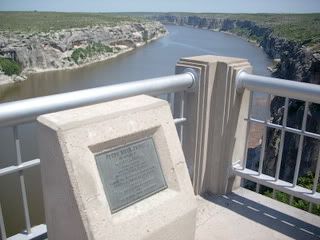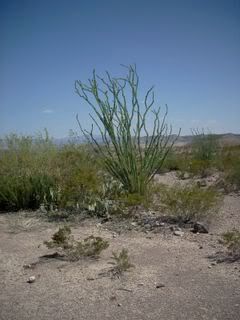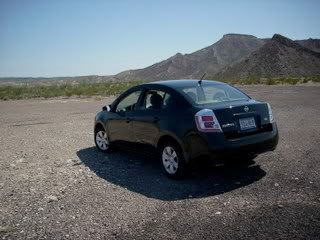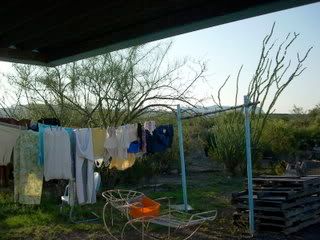So, setting back the calendar to Wednesday morning, I hoofed it to the car rental place on St. Mary’s. After some fancy footwork to avoid all the bullshit like additional insurance, a costly upgrade (“this Mercedes is the perfect choice for the sort of road trip you have in mind, sir”), and god knows what else — after a “no,” a “I don’t think so,” and a firm “thank you, but, no,” I got out of there with the same Nissan I had reserved the previous day, and almost at the same rate. Tuesday I was quoted, with tax and et al, $195 for Wednesday through to late Monday afternoon. The next day, I was given a quote of $207. Close enough, and I grabbed up the keys and skedaddled before it climbed any higher. But, truly, I hate this sort of arbitrary crap ladled up by all the swine who work in these seemingly unregulated service industries where the language of mathematics and accounting (hitherto the most succinct and accurate languages know) have become slippery and mutable.
I headed out of town on highway 90, through Castroville and Del Rio. The car had an auxiliary plug into the face of the stereo. Brilliant! All cars should have this. I patched my iPod in with a mini plug from one of my wireless lavaliere microphones. Worked great.
A little bit after noon I crossed over the Pecos River. The canyon country along the Tex Mex border from Del Rio to Dryden is a deceptive topography. What looks flat from horizon to horizon is in fact a corrugated surface cut through with sloping arroyos or steep-walled canyons.

Highway 90 hooks up with 67 just before you hit Alpine. And on through to Marfa, this is the high plains of Trans-Pecos Texas. Isolated clusters of mountain chains dot the land off in the distance. At Marfa, 90 and 67 split off. 67 heads south to Presidio, a descent of 1/2 a mile in elevation. It gets a bit rocky and wild at the town of Shafter. The designation as a ghost town seems a bit forced. It has a tiny population, but there are people living there. It’s not what it once was when the silver mines were in full swing back in the early part of the 20th century. Shafter was used quite effectively in the movie “The Andromeda Strain.” It’s where the infected satellite landed and killed off all the inhabitants save (if I recall the film correctly) two.

About two miles south of Shafter, you come out of the mountains, and there you see all of the Presidio valley. You’re up on the shoulder — the foothills — of the Chinati Mountains (Chinati is Spanish for grackle — it’s also used colloquially in northern Mexico to describe Indians with very dark skin). This is always something of a homecoming to me. This is where La Junta begins. And La Junta de los Rios is why I’m heading down into the valley formed by the Conchos and the Rio Grande rivers.
It’s all so familiar to me. The mountain chains are like old friends. The Chinatis, over my right shoulder. The Cienegas are some ways off, and I can see them if I crane my head to the left (with their worn soft slopes, they are, geologically, the oldest mountains in sight). Cerro Alto sits just across the river in Mexico, huge and low, like an enormous tortoise. Cerrito de la Santa Cruz looms up long and jagged just behind Presidio’s Mexican sister city, Ojinaga. Atop Cerrito de la Santa Cruz is a cave where the devil is imprisoned. This mountain plays a major role in the documentary, “The Devil’s Swing.” And that’s why I’m here. I need to collect one of the subjects of the film, and drive him back to San Antonio, so that he can talk to an audience who’ll come to watch the film. I will find him in Redford, Texas. It’s also known as El Polvo. The little hamlet is on the Rio Grande, 16 miles down-river from Presidio. I look off in that direction and see, in the distance, the Bofecillos Mountains in the US, and Sierra Rica, across in Mexico.
I aim my little rental car south, and I descend into the valley.
Presidio hasn’t changed too much since I last visited a year and a half ago. There are a couple of new stores. The improved fire house was open. My favorite gas station (family-owned) was shut down. A new gas station (complete with a soulless convenience store) was now across the street.
I got on the river road and soon left Presidio.
Before I got to Redford, I pulled off the road and took a few photos.


This stretch of highway 170 is still in my bones. I lived here for about a year a decade and a half ago. I come back and visit when I can. This is the road I would drive my 1969 Coupe DeVille with the cheap black paint job (perhaps the longest two door car of its era). For the citizens of Redford, the river road is almost a private road to their community. Well, that was then. It all changed in 1997 when Esequiel Hernandez, a shy and conscientious high-school student, was killed by a team of US Marines on a covert, clandestine operation.
Redford has a population of about 130. It formed as a farming community in the 1870s. There isn’t much farming anymore, and the locals have a hard time making ends meet. It’s common for people to work elsewhere for six months, and live the rest of the year in Redford. It’s a beautiful place, just desperately poor. When I lived there, Redford boasted a general store and a gas station. Not anymore.
I drove through town and pulled up at the old Madrid Store. Before I moved to Redford, Enrique’s father ran a combination general store and gas station. It eventually shut done. Enrique’s father died. His mother, a retired school teacher, turned the shop into a free library. She wanted to help out the kids who attended the one room school house across the two-lane highway.
Mrs. Madrid, the library, and the school were all there when I lived in Redford. Now, they’re all gone. Redford doesn’t even have a school.
When I rolled up to the Madrid’s, Enrique stepped out the front door. Three frisky dogs danced around him barking at me. The dogs charged, and soon they were rubbing their heads against me, licking my hands. I didn’t recognize them. Pets in Redford often come and go quickly. Many meet their demise from cars on the highway, snake bite, or coyotes coming down from the hills at night.
Enrique looked pretty much the same. A few years back he had lost a considerable amount of weight after he modified his diet when diagnosed as diabetic. And as he’s decided to identify himself as an indigenous American, he’s been growing his hair long. These are changes I’ve seen develop in my visits. The only new addition was the grey hair. Both he and his wife, Ruby. They don’t really seem older to me, but they now have grown gray.
As me and Enrique caught up, Ruby disappeared into the kitchen. I eventually heard the hissing of an espresso machine. Their friend Roberto showed up in time for cappuccino. Roberto is a history teacher at the Presidio high school. He’s also on the books as a Jumano Indian. Because Ruby had to work and couldn’t come to San Antonio with me and Enrique, Roberto was going to fill in. His semester had just ended, and he was open for a road trip.
We all watched a new documentary titled “The Ballad of Esequiel Hernandez.” It was shot while Tommy Lee Jones was in Redford directing his “Three Burials of Melquiades Estrada.” The documentary crew was from New Mexico. They got Tommy Lee Jones to provide some voice-over narration. The film is currently working the festival circuit. It’s incredible. They got access to almost everyone. I now need to contact the filmmakers and see what I can do to get the work screened in San Antonio.
After the film, we had dinner. Ruby’s cheese enchiladas are so enjoyable that I half-expect them to be classified as a Schedule II drug by the Department of Justice.

The next morning me and Enrique drove to Presidio and picked up Roberto. We all headed to San Antonio.
Drew Mayer-Oakes over at the film commission have arranged for Enrique and a guest stay at El Tropicano Riverwalk Hotel. This place has an early ’60s vibe. Very retro. I kept expecting to look up and see Sammy Davis Jr. walk through the lobby — he’d be wearing a black two-piece suit, a white turtle neck sweater, a huge gold peace sign necklace, and the cocktail glass in his hand would feature mango chunks and triple sec.
We had dinner at Taqueria Guadalajara on Roosevelt. And called it a night. I dropped the guys off at their hotel room.